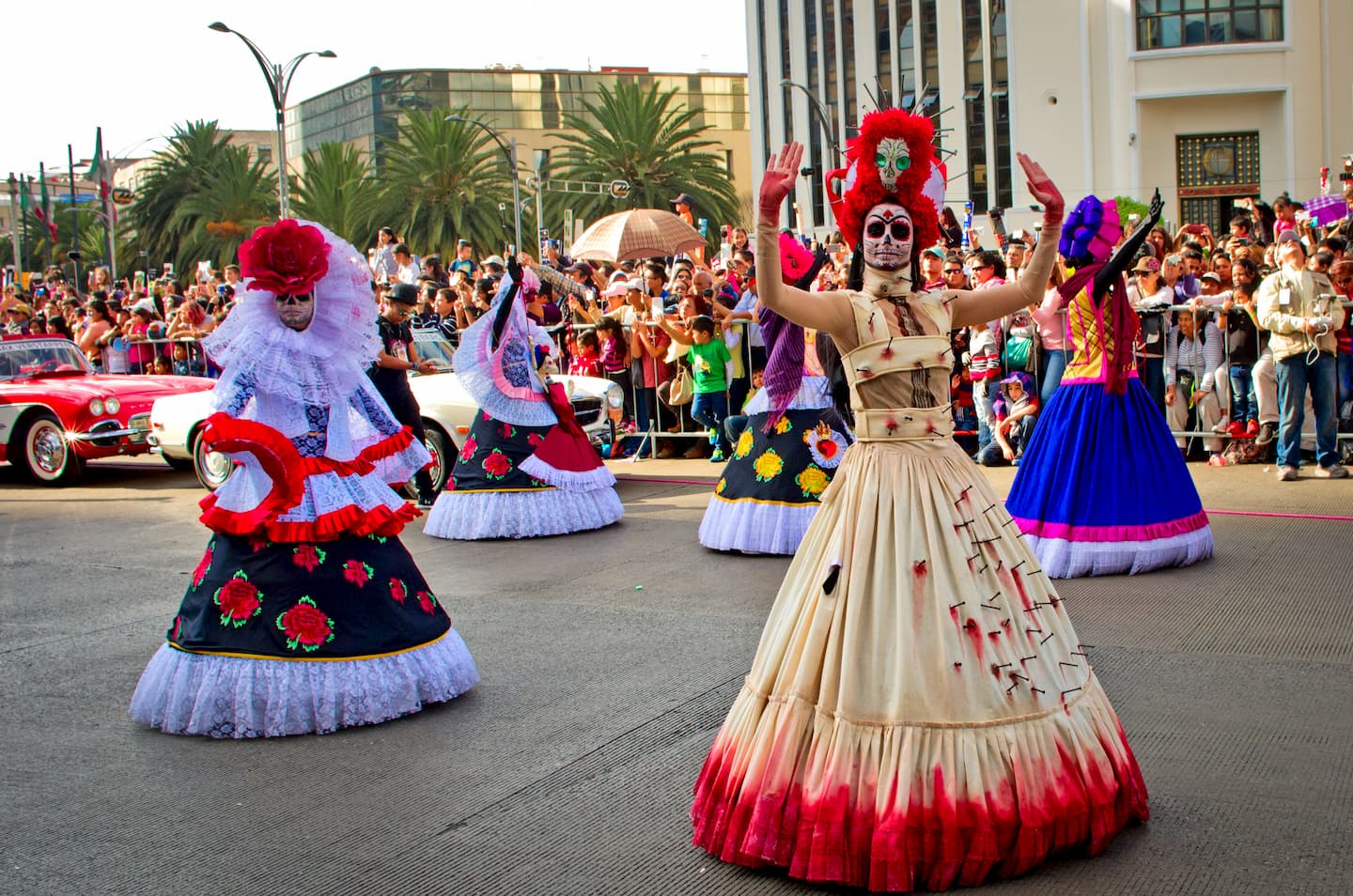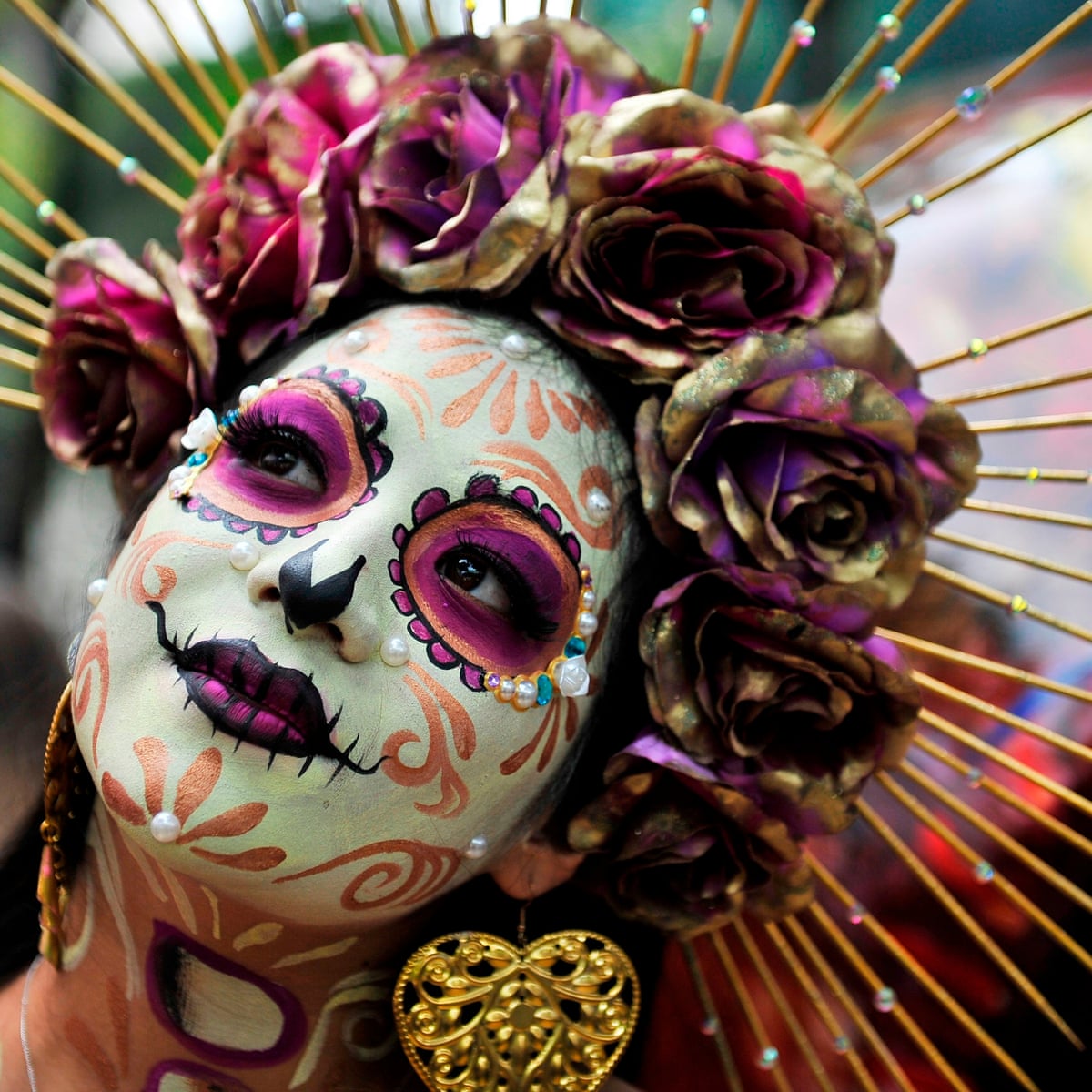Festivities
Festivals of life nourish us with ancient rituals in a fast-changing world, covering all facets of the human condition, the changing seasons, weddings, coming of age ceremonies, births and deaths, the worship of gods and the battle against evil spirits. Mexico’s Day of the Dead celebrations that unite the living and the dead in feasting, dancing, and decoration. In Oaxaca City, local artists create sand tapestries and enter an altar competition. Families gather at the public cemetery to clean the graves of loved ones and make offerings. In Etla, muerteadas, or street parades, last all night as rival bands engage in mock battles.



The Day of the Dead is a time of celebration and remembrance of loved ones who have passed away, much like Memorial Day in the United States. During the days of the dead, the family often takes the opportunity to visit the gravesite and pull weeds, clean any debris and decorate the graves of loved ones.Day of the Dead (Dia De Los Muertos) is a two day holiday that reunites the living and dead. Families create ofrendas (Offerings) to honor their departed family members that have passed.
How did Day of the Dead start?
The roots of the Day of the Dead, celebrated in contemporary Mexico and among those of Mexican heritage in the United States and around the world, go back some 3,000 years, to the rituals honoring the dead in pre-Columbian Mesoamerica. The Aztecs and other Nahua people living in what is now central Mexico held a cyclical view of the universe, and saw death as an integral, ever-present part of life.
The Day of the Dead (el Día de los Muertos), is a Mexican holiday where families welcome back the souls of their deceased relatives for a brief reunion that includes food, drink and celebration. A blend of Mesoamerican ritual, European religion and Spanish culture, the holiday is celebrated each year from October 31- November 2. While October 31 is Halloween, November 1 is “el Dia de los innocents,” or the day of the children, and All Saints Day. November 2 is All Souls Day or the Day of the Dead. According to tradition, the gates of heaven are opened at midnight on October 31 and the spirits of children can rejoin their families for 24 hours. The spirits of adults can do the same on November 2.
El Día de los Muertos is not, as is commonly thought, a Mexican version of Halloween, though the two holidays do share some traditions, including costumes and parades. On the Day of the Dead, it’s believed that the border between the spirit world and the real world dissolve. During this brief period, the souls of the dead awaken and return to the living world to feast, drink, dance and play music with their loved ones. In turn, the living family members treat the deceased as honored guests in their celebrations, and leave the deceased’s favorite foods and other offerings at gravesites or on the ofrendas built in their homes. Ofrendas can be decorated with candles, bright marigolds called cempasuchil and red cock’s combs alongside food like stacks of tortillas and fruit.
The most prominent symbols related to the Day of the Dead are calacas (skeletons) and calaveras (skulls). In the early 19th century, the printer and cartoonist José Guadalupe Posada reenvisioned Mictecacíhuatl, the Aztec goddess of the underworld, as a female skeleton known as La Calavera Catrina, now the most recognizable Day of the Dead icon.
During contemporary Day of the Dead festivities, people commonly wear skull masks and eat sugar candy molded into the shape of skulls. The pan de ánimas of All Souls Day rituals in Spain is reflected in pan de muerto, the traditional sweet baked good of Day of the Dead celebrations today. Other food and drink associated with the holiday, but consumed year-round as well, include spicy dark chocolate and the corn-based liquor called atole. You can wish someone a happy Day of the Dead by saying, “Feliz día de los Muertos.”
Though the particular customs and scale of Day of the Dead celebrations continue to evolve, the heart of the holiday has remained the same over thousands of years. It’s an occasion for remembering and celebrating those who have passed on from this world, while at the same time portraying death in a more positive light, as a natural part of the human experience.